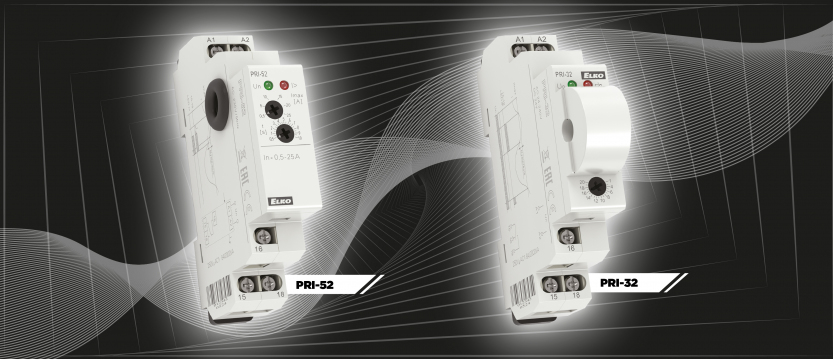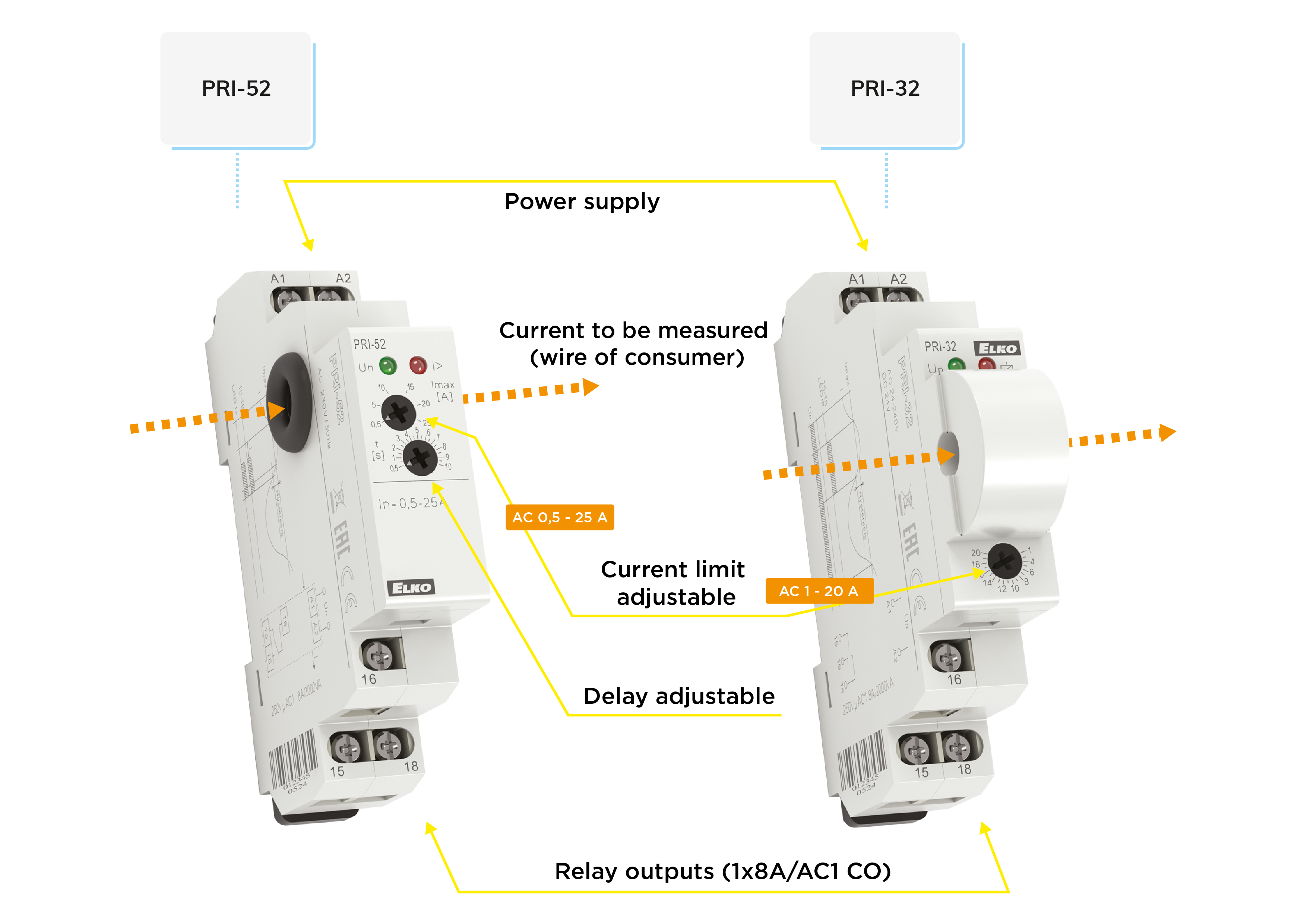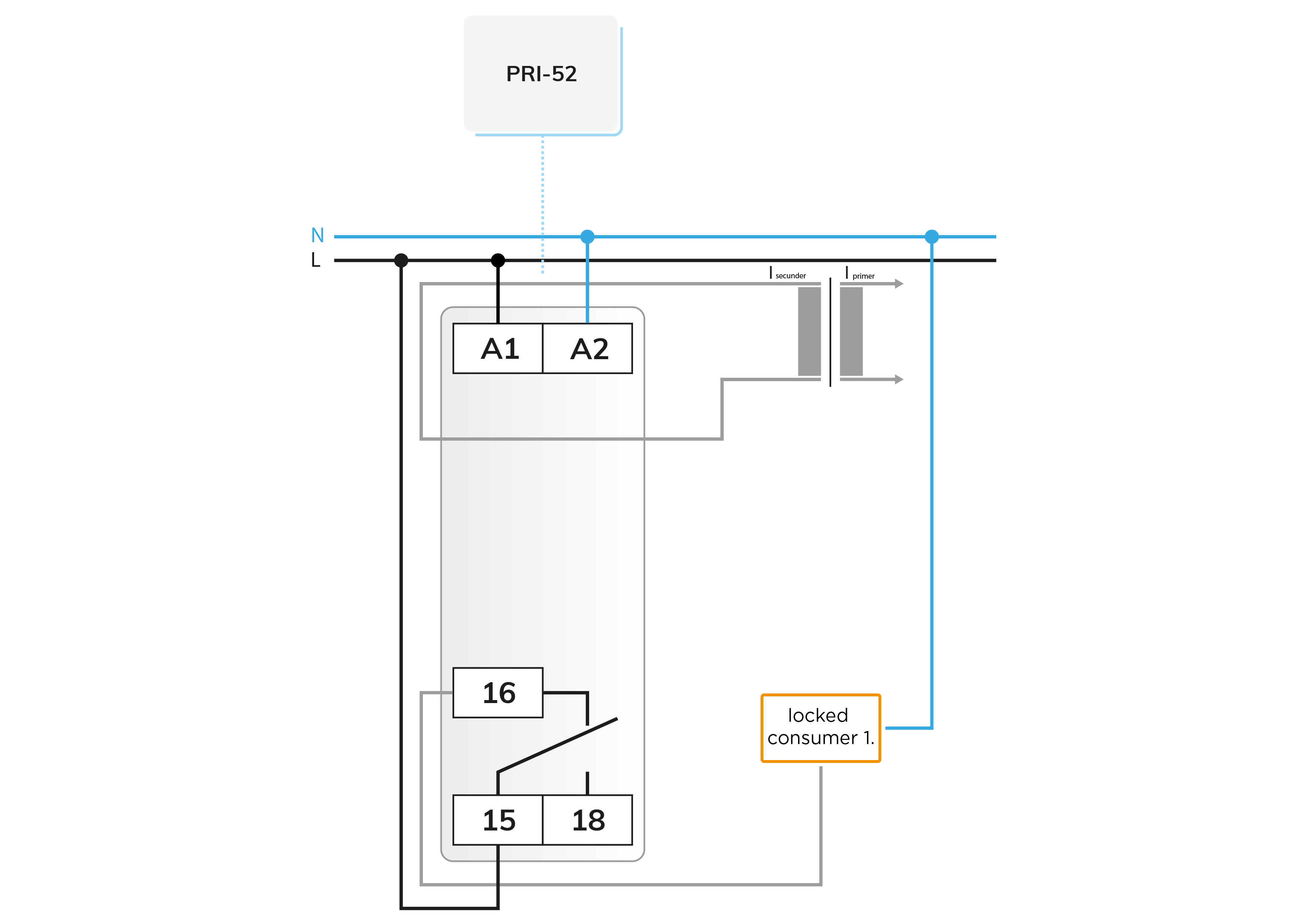Join to our online upcoming free webinars...

There is a real through hole on the side of our PRI-32 and PRI-52 current monitoring relays! And there is nothing suspicious about looking through the hole to see the other side!
This is the location of the primary "coil" of the built-in current transformer, which is nothing more than the consumer's power line, which must not be connected to a shunt, but must be threaded through this hole, through the opening, and the device monitors the alternating current flowing in it.
Figure 1 reveals exactly who they are without any special investigation.

Figure 2 shows what these current monitors know and how they work. According to the diagram, it looks similar to the operation of the PRI-51 "go - no go" switch presented in our previous letter.
Yes, because it works the same way:
• if the monitored current exceeds the set value, the output relay closes.
Note that the PRI-32 has no delay.
When the set current limit is exceeded, the PRI-32 relay reacts immediately, while the PRI-52 waits for the set delay time, and then checks the current again when the delay is over. If it is still greater than the set value, then the relay closes. With the delay, we can eliminate power surges and short-term disturbances during the operation of the monitored device.
The relay is switched off by hysteresis when the current is below the limit value. The hysteresis of the PRI-32 is 5% (so it depends on the current value), while the hysteresis of the PRI-52 is fixed at 0.25 A.
Of course, a current converter can also be used for the current converter, if we have a consumer with a higher power than the limits of the device. The accuracy is also modified by this, but these devices are not designed for precise current measurement, or even for current measurement at all, so some inaccuracy in their scope of application is generally not considered a problem. For precise current measurement, use an actual current meter with the appropriate accuracy for the task.
Figure 3 shows the connection of the priority current transformer/current transformer version, where it is also a basic rule that the secondary side must not be open. If we implement the non-priority switching described in our previous letter in this way, the blocking must be solved on the primary side.

Switching on consumers in sequence
It may happen that our main circuit breaker cannot withstand the current surge from the simultaneous start-up of our devices, otherwise it can withstand their constant combined current consumption. We have already presented several solutions for this case in our previous letters using the SJR-2 time relay.
In the last few days, the air conditioners, which are mostly the modern inverter types, must have been going full steam ahead, but max. performance, but due to electricity and heat, they are almost constantly in operation, while e.g. the electric oven should also go from that one 16 A circuit breaker.
With our solutions, we may have given you some ideas if our circuit breaker cannot handle several higher-power consumers on one phase at the same time. The presented solutions can be called cost-reducing, since by using them we can avoid power expansion, so we don't even have to pay a higher basic fee to the service provider - this small investment can pay off quickly.